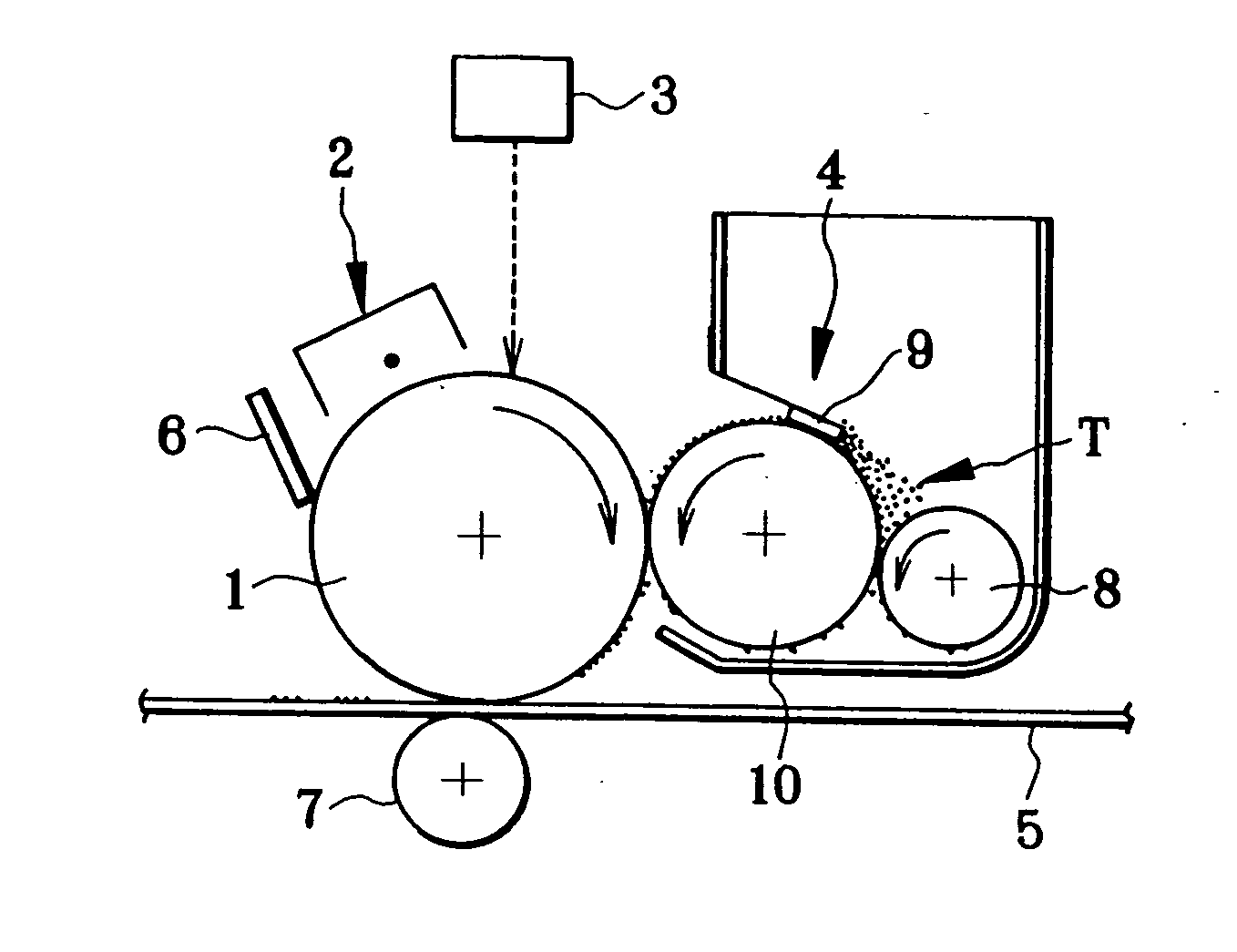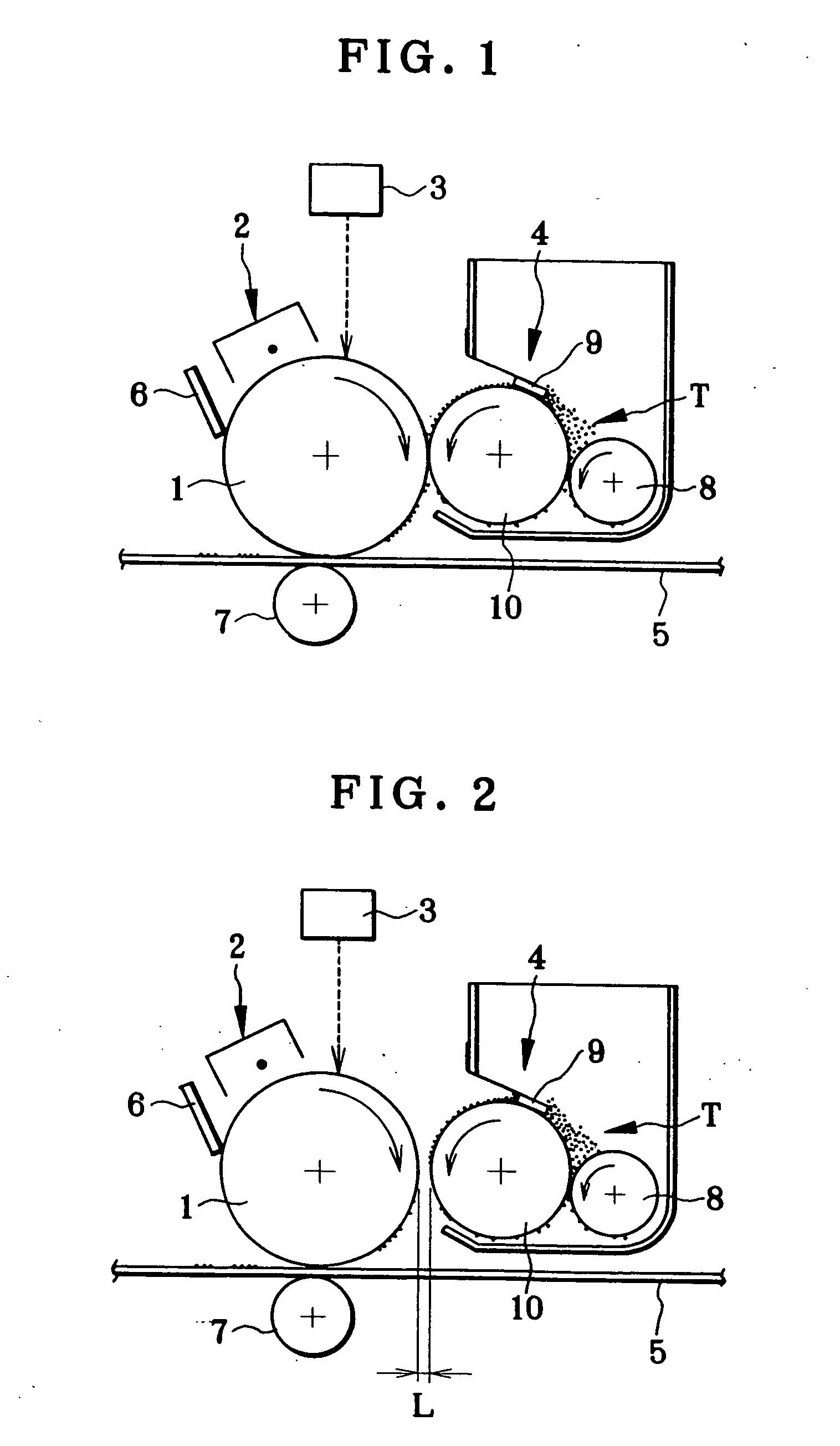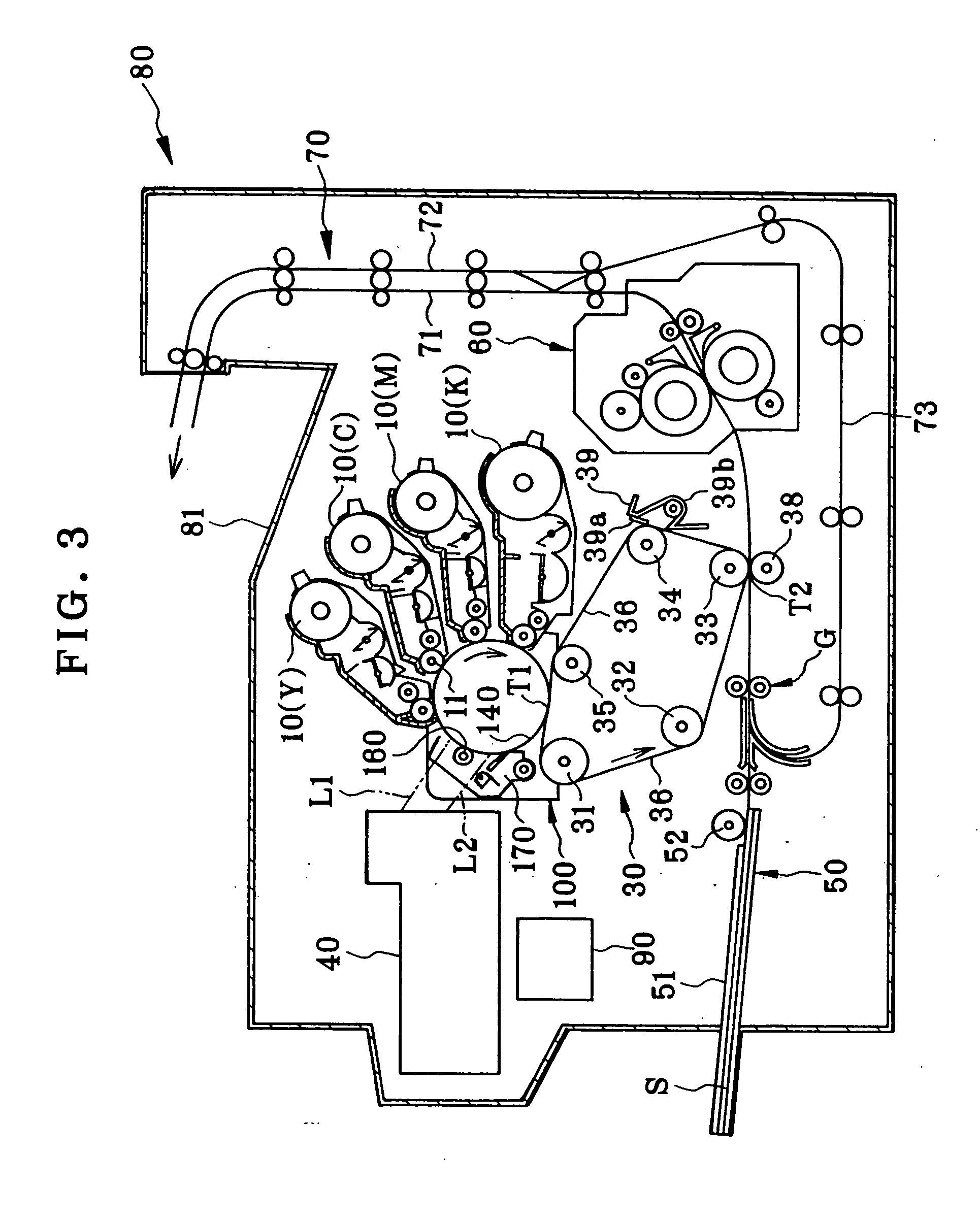Image forming apparatus
a technology of forming apparatus and forming chamber, which is applied in the direction of electrographic process apparatus, instruments, corona discharge, etc., can solve the problems of non-image parts, unable to obtain clear color images, and unable to uniformly charge toner, so as to improve the transfer efficiency, reduce the amount of fog, and improve the effect of transfer efficiency
- Summary
- Abstract
- Description
- Claims
- Application Information
AI Technical Summary
Benefits of technology
Problems solved by technology
Method used
Image
Examples
example 1
[0202] The toner (1), the toner (4), and the organic photoreceptors [OPC (1), OPC (4), OPC (5)] obtained above were employed to have combinations as shown in Table 1 and adopted to the apparatus of contact single-component developing method shown in FIG. 1.
[0203] For tests, the peripheral velocity of the organic photoreceptor was set to 180 mm / s. The development roller (1) obtained above was employed and the peripheral velocity thereof was set to have a specific ratio of 2 relative to the organic photoreceptor. The development roller was pressed against the organic photoreceptor at pressing load 40 gf / cm with a nip width of 1.5 mm.
[0204] A toner regulating blade was made by bending the end of a SUS plate of 80 μm in thickness by 10° to have projection length of 0.6 mm. The work function was 5.01 eV. The toner regulating blade was arranged to be pressed against the development roller with a linear load of 33 gf / cm in such a manner as to make the toner layer on the development rolle...
example 2
[0215] The toner (1), the toner (4), and the organic photoreceptors [OPC (1), OPC (4), OPC (5)] obtained above were employed to have combinations as shown in Table 2 and adopted to the apparatus of non-contact single-component developing method shown in FIG. 2.
[0216] For tests, the peripheral velocity of the organic photoreceptor was set to 180 mm / s. The development roller (1) was employed and the peripheral velocity thereof was set to have a specific ratio of 2 relative to the organic photoreceptor. A development gap L was set to 210 μm (the space was adjusted by a gap roller). A developing bias was applied under condition that an alternating current (AC) to be superimposed on a direct current (DC) of −200 V was set to have a frequency of 2.5 kHz, and P-P voltage was set to 1500 V.
[0217] Similarly to Example 1, a regulating blade- made of a SUS plate of 80 μm in thickness was used as the toner regulating blade. The toner regulating blade was arranged to be pressed against the dev...
example 3
[0222] The toners for four colors: the cyan toner (1); the magenta toner (4); the yellow toner (5); and the black toner (6), and the organic photoreceptor [OPC (4)] obtained above were combined to form full-color images. As an image forming apparatus, a four-cycle color printer of the non-contact developing type as shown in FIG. 3 (in this case, however, the aluminium pipe of the organic photoreceptor [OPC (4)] was 85.5 mm in diameter) was assembled. In addition, a tandem color printer of the contact developing type as shown in FIG. 4 (in this case, however, the aluminium pipe of the organic photoreceptor [OPC (4)] was 40 mm in diameter) was assembled.
[0223] Either printer can provide uniform fullcolor images. After character image corresponding to color original containing 5% each color was continuously printed on 10000 sheets of paper, the total amount of four color toners collected by cleaning the photoreceptor was measured. In case of the four cycle type color printer shown in ...
PUM
 Login to View More
Login to View More Abstract
Description
Claims
Application Information
 Login to View More
Login to View More - R&D
- Intellectual Property
- Life Sciences
- Materials
- Tech Scout
- Unparalleled Data Quality
- Higher Quality Content
- 60% Fewer Hallucinations
Browse by: Latest US Patents, China's latest patents, Technical Efficacy Thesaurus, Application Domain, Technology Topic, Popular Technical Reports.
© 2025 PatSnap. All rights reserved.Legal|Privacy policy|Modern Slavery Act Transparency Statement|Sitemap|About US| Contact US: help@patsnap.com



